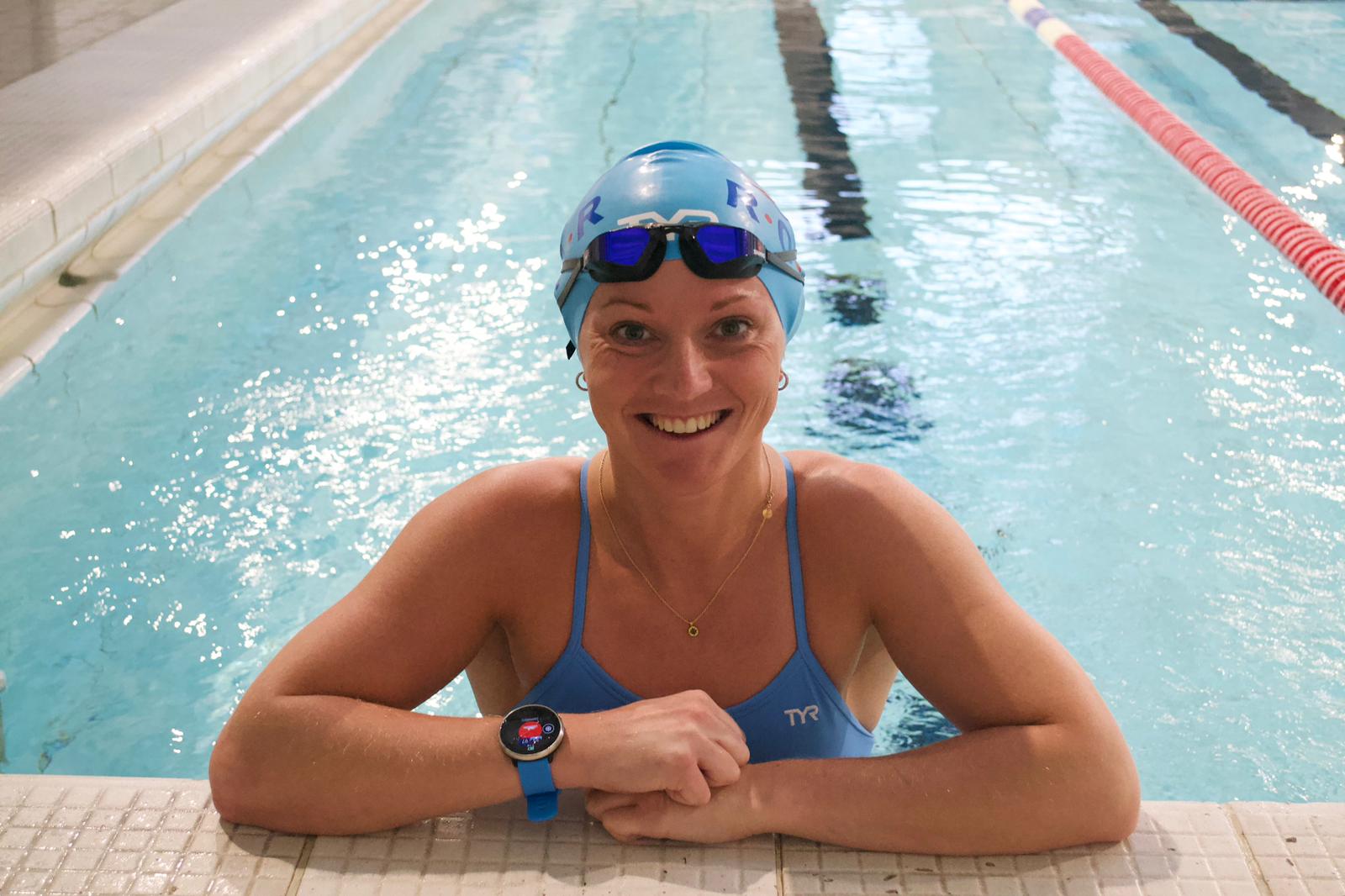Despite being born with a hearing loss, Suzanna competed as an able-bodied equestrian eventer until 2012 when she suffered a spinal cord injury and multiple broken bones in her back and pelvis after a riding accident, leaving her paralysed. A course of hydrotherapy brought her attention to the positive effects of swimming on her rehabilitation and, whilst enjoying tremendous success in para-dressage becoming European triple Gold medalist after courageously getting back in the saddle, Suzanna burst on to the para-swimming scene in 2019 claiming a Silver and Bronze medal in her debut World Championships and is currently training hard working towards the Paralympic Games in Paris 2024.
Suzanna’s hearing deteriorated significantly as an adult to the point where she is now profoundly deaf, and she was fitted with Cochlear implants in 2021. Here she shares her top tips and advice on getting the most from swimming with cochlear implants.

How do you find swimming with your sound processors?
“Swimming with my processors on has made a huge difference. I am able to focus on my swim training and I’m not struggling to understand what my coach is saying. I used to get extremely fatigued from relying on lip reading in my training sessions, and quite often misunderstanding what my coach was saying. I also love being able to hear the sound of the water as I swim along.”
What helps to keep the sound processors in place while you swim?
“When I’m swimming, I have a swim hat on over my processors and my goggles. This helps keep the processor in place behind my ears and helps to keep the coil secure.”
Have you tried a few different techniques?
“I have tried a few techniques and tried putting the coils more securely under my hair to keep them in place, however, I find wearing them like I would on a day to day basis when I have my hair up works best and then putting the swim hat and goggles over the top. There are times when the coils move, however, it’s never difficult to get them back in place and carry on.”
Do you use anything else when swimming?
“When I’m training my coach wears the Cochlear True Wireless Mini Mic 2+ which streams directly to my processors, and it is a complete game changer. I can hear my coach while I am swimming; the Mini Mic homes in on just his voice, which makes it extremely clear. It blows me away and has made a massive difference to my training.”
What advice would you give to someone who wants to wear their sound processors whilst swimming?
“I would say go for it! You’ll get used to what works best for you in terms of setup, don’t be afraid to have a play around. If you’re having swimming lessons, I would recommend the instructor wearing the Mini Mic, as it makes it a lot easier to pick up what someone’s saying. Even if you’re not having lessons, I find wearing my processors whilst swimming incredible to be able to enjoy the sounds of the water.”

Our latest cochlear implant sound processors are splash-proof, dust-proof and water resistant.* But with Aqua+, your sound processor is transformed into an enhanced water resistant (IP68) solution, offering protection in water up to three metres deep for two hours.*
Aqua+ solutions are available for both behind the ear and off the ear sound processors. Find out more here.
* The Cochlear Nucleus 8 Sound Processor with Aqua+ is dust and water resistant to level IP68 of the International Standard IEC60529. The Nucleus 8 Sound Processor with Aqua+ can be continuously submerged under water to a depth of up to 3 metres for up to 2 hours. Refer to the relevant user guide for more information
The Cochlear Nucleus Kanso 2 Sound Processor with Aqua+ is dust and water resistant to level of IP68 of the International Standard IEC60529 and can be continuously submerged under water to a depth of up to 3 metres for up to 2 hours. Refer to the relevant User Guide for more information.
The Cochlear Nucleus 7 Sound Processors with a Cochlear water protection accessory are dust and water resistant to level IP68 of the International Standard IEC60529 when you use a Cochlear Rechargeable Battery Module. Refer to the relevant User Guide for more information.
Some models of Aqua+ accessories require the earhook to be removed before inserting the sound processor into the accessory. Please consult the instructions for use for more information.




